Efficient crop production is a complex science that requires understanding the role of essential nutrients in plant growth. Among these nutrients, phosphorus plays a crucial role in various plant functions, including energy transfer, photosynthesis, and nutrient movement within the plant. With its foundational importance, managing phosphorus levels through proper fertilization is vital to achieving optimal crop yields. This blog aims to explore the significance of phosphorus in agriculture, highlighting the best practices and timing for applying phosphate fertilizers. Farmers and agronomists can improve crop performance and contribute to sustainable agricultural practices by understanding how and when to utilize phosphorus effectively.
What is Phosphorus and Why is it Important for Crops?
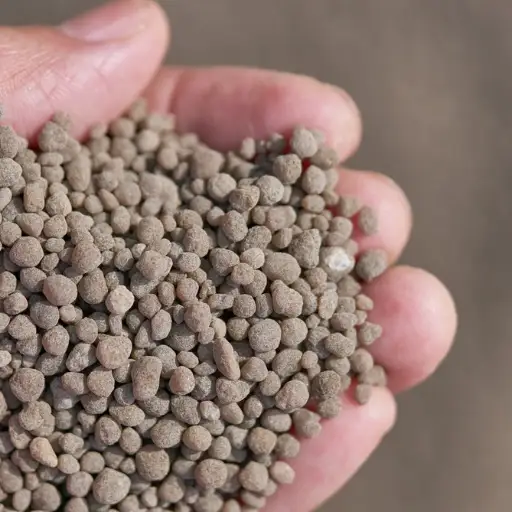
Understanding Phosphorus Works as a Macronutrient
Phosphorus is one of the most important macronutrients which is essential for the growth and development of plants. It serves many basic functions and one of them is energy transfer because it is part of ATP, the molecule responsible for energy storage and transfer in cells. Phosphorus also helps in photosynthesis by aiding in the formation and functioning of chlorophyll. Also, it assists in the synthesis of the plant structure including the roots and the flowers. The appropriate phosphorus levels help the plants effectively absorb other nutrients which promote their growth and productivity. In crops, phosphorus deficiency can be noted because of stunted growth and a lack of green pigmentation in the leaves indicating the requirement of phosphate fertilizers for increased productivity.
The Importance of Phosphorus in Plants
Phosphorus is an essential nutrient for plants as it is a key component in a number of biological processes. It supports photosynthesis, enabling plants to utilize sunlight which is a form of energy, and is necessary for nucleic acid synthesis which regulates protein synthesis which is crucial for cell growth and development. In addition, phosphorus helps roots form which is necessary for water and nutrient absorption. A lack of this macronutrient can cause low harvest production and stunted growth, so it is important for achieving productivity in sustainable agriculture. Proper phosphorus management through proper timing and sufficient application of fertilizers ensures that plants have the resources they need for optimum growth, hence improving plant health and nutrient utilization efficiency.
Phosphorus Deficiency: Signs and Symptoms
Phosphorus deficiency in plants can be detected with the help of a few noticeable signs and symptoms. One of the initial signs is the leaves showing purplish or reddish tones due to the presence of anthocyanins. Furthermore, plants show poor growth as phosphorus is essential for energy transfer and the synthesis of DNA. Root system might also be affected in terms of growth which may lead to overall reduction in plant health. Maturity in certain crops could be slow and as a consequent yield is reduced. Detection of these symptoms helps in applying a suitable fertilization program in advance of time to counter the negative effects and bring back the working of the plants.
How to Determine the Right Time to Apply Phosphorus Fertilizer?
Phosphorus Fertilizers and Their Application in Agriculture
Soil testing is done to know the appropriate time to apply phosphorus fertilization. The current top resources add that the first step in these processes of phosphorus assessment should always be a competent, accurate soil test. This involves taking soil samples from various spots around your farm, field, or garden into a laboratory for phosphorus testing and other essential soil elements. These then determine when the phosphorus would be used as well as the amount that is to be applied and which is tailored for the crops to be grown while being environmentally safe. Periodical soil testing, done in intervals of a few years, also finds its place here due to its significance in checking the alterations in nutrient status and recommending the necessary actions to restore the soil properties and crop yield.
Best Times for Phosphorus Application
In most instances, the optimal periods for phosphorus application correlate with crop cultivation periods such as pre-planting and early growth periods. Phosphorus is, for example, recommended for application in autumn and early spring seasons. Autumn applications assist in weathering two months after the harvest which integrates phosphorus in the soil and is available where active roots will later develop. Spring applications are commendable for excessively cold winter areas as nutrients are available just before planting. Cropping objectives should also consider the weather in order to prevent the loss of phosphorus through sopranos and other forms of discharge. Looking at these factors in addition to the soil test results allows for the effective application of fertilizer and conservation of environmental integrity as well.
Environmental Considerations with Times of Phosphate Fertilizer Application
Both dates have their relative advantages and disadvantages when choosing between fall and spring application of phosphate or phosphorous fertilizers. Fall application is good in that it prepares farmers to carry out fertilizer application with a lot of accuracy as their time as busy throughout the season. It helps soil phosphorus to be well integrated in the soil and ready for root uptake when growing season begins. However, there is a danger of leaching out of nutrients over winter especially in areas with high amounts of rainfall and over snowmelt. Spring application on the other hand closes on planting seasons thus crops are able to meet their demands so as they start growing. Such kind of timing can help reduce losses since deposition of fertilizers is sometime nearer to times when plants can uptake those fertilizers. However, spring application may have limitations due to the weather condition and time factors during planting season. In conclusion, whether to carry out application in the fall or in the spring should be influenced by the farmer’s resources, local climate, and soil conditions in order to enhance efficiency and maximum crop yield.
What Are the Different Types of Phosphorus Fertilizers?
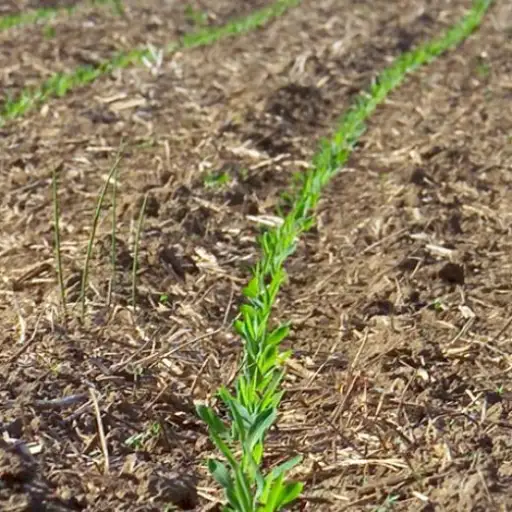
Superphosphate vs monoammonium phosphate
Superphosphate and monoammonium phosphate are both phosphorus fertilizers that are widely used but have different characteristics and uses. Superphosphate, formed by treating phosphate rock with acids, generally contains up to 20% of phosphorus. Such fertilizer is mostly employed to promote primary plant growth and enhance the root as its nutrients are released over a long period. On the other hand, monoammonium phosphate (MAP) contains nitrogen and phosphorus, and the phosphorus content in most cases is about 48%. MAP is ideal for very soluble phosphorus plants because it is highly soluble. It is especially beneficial when used in starter fertilizers because the combination of nutrients is optimal for vigorous initial growth. These types of fertilizers are used depending on the type of crops to be grown, the properties of the soil and the time when the nutrients in the fertilizer are required.
Using Organic Phosphorus Fertilizers
Organic phosphorus fertilizers Organic phosphorus fertilizers have an edge over synthetic fertilizers as they not only replenish the nutrients but also promote soil health. Organic phosphorus fertilizers include animal bone meal, rock phosphate and compost. Bone meal has the slow release of phosphorus which makes it suitable for enriching soils for long periods and it encourages root and flower formation. Rock phosphate is another popular type of phosphate but it is most effective if applied to acidic soils in which the phosphorus of rock becomes readily available. Compost contains pores saturated with organic matter that provides nutrients plus improves the soil structure and the activity of microorganisms. As reliance on such chemical fertilizers will decrease, the organic approach will help enhance agriculture positively. Such fertilizers promote biodiversity and improve the sustainable health of the soil.
Liquid Fertilizers Versus Granular Phosphate Fertilizers: Which Is Better?
Application method, soil type, and tcrop needsshould all be considered when choosing between liquid and granular phosphate fertilizers. Quick uptake and ease of application through a wide range of irrigation systems make liquid fertilizers very popular as the nutrients are readily available for plant uptake. This is useful in the production of fast growing crops that have a high demand for phosphorus. On the contrary, granular fertilizers have a more prolonged availability of nutrients which is useful for improving the soil’s fertility over a longer period and where applications are less frequent. They are released when a more controlled and prolonged release of nutrients is required or in cases where irrigation systems are not applicable. The choice, in the end, is determined by the technical needs of the crop being grown and the prevailing climatic conditions.
What Should You Know About Soil Conditions for Phosphorus Application?
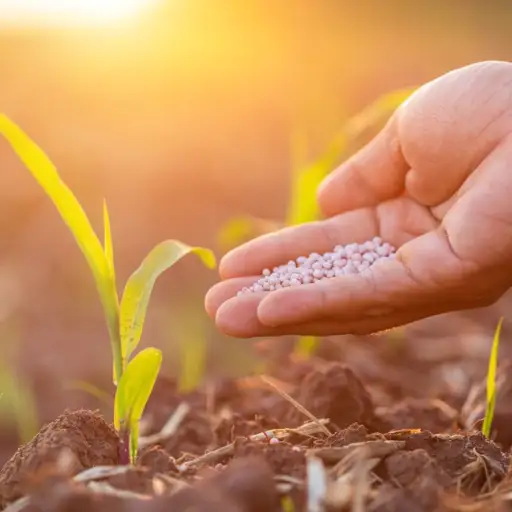
Phosphorus Availability in Soil in Context of Soils pH
Soil pH has a most decisive bearing on the phosphorus availability which is important to plants as a nutrient since it affects the phosphorus solubility as well as its possible reactions with the soil particles. In soils with high acidity reacting compounds (pH less than 5.5), phosphorus has the tendency to attach to iron and aluminum to create complexes that are inaccessible to plants. On the other hand, phosphorus ions can become insoluble in alkaline soils (pH greater than 7.5) because of calcium interactions. Soil pH of 6.0 to 7.0 would be the most desirable for increasing phosphorous availability in the soil as it would be optimal for most P forms utilization by plants. Thus, controlling and modifying soil pH might help make the most out of phosphorus fertilizer application and ensure crop growth is not jeopardized.
Soil Moisture and Its Impact on the Uptake of Fertilizers by Plants
The moisture content present in the soil is equally important for the absorption of fertilizers as it is to plants. If the soil has sufficient moisture, it assists in dissolving and moving nutrients so that the plant roots can easily take up the nutrients. On the other hand, if the soil is too dry, it will impede nutrient movement and plant growth and nutrient uptake will be very poor. On the contrary, in soils that are too wet, nutrients aesthetically phosphorus in plants which need phosphorus gets leached or washed away or becomes unavailable to plants which is also a negative outcome. Furthermore, increasing flexibility around moisture content and soil through proper irrigation management increases the effectiveness of application of fertilizer nutrients and application enhances nutrients fulfillment to the roots of plants for better and health growth and development.
Soil Fertilizer Adjustment Procedures
Adjusting fertilizer application rates to the soil type depends on the amount of organic matter and texture of the soil as well. Suppose lower particle size sandy soils are highly leached due to the higher possibility of soil erosion. In that case, more frequent and lower rate fertilizer applications may be advisable to ameliorate nutrient leaching. In clay soils, however, there is a greater tendency for retention of nutrients and moisture. Still, compaction may be an issue and thus warrants specific management so that the nutrients are available to the roots of the crops. Loam types of soils which are considered favorable for agriculture since they overcome the limitations of both drainage and nutrient retention, are also in need of site specific fertilization techniques to maintain soil fertility and vigor of the crops. In addition, organic matter can increase both nutrient retention and promote better soil structure, which allows for more efficient nutrient uptake. By accommodating these differences and variations, fertilization practices can be effective to improve the health of the plants and their productivity when grown in different types of soils.
How Does Phosphorus Interact with Other Nutrients?
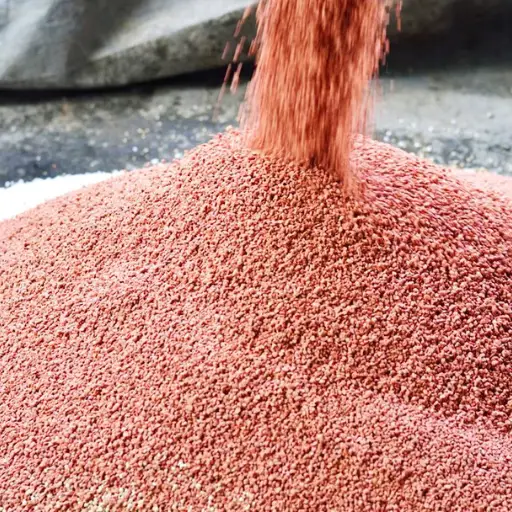
Phosphorus and Potassium: Nutrition Interdependency
As far as the connection between phosphorus and potassium is concerned, I got to know that both of the elements are essential for plant health and development. Phosphorus is crucial in energy transfer and nucleic acid synthesis while potassium is important for enzyme activation, photosynthesis processes, and plant vigor. Their interrelation in soil can alter the degree on which a plant is able to take nutrients, with phosphorus being available in certain degrees depending on cation potassium and hydrogen ion concentrations in soil. It is imperative to maintain proper balance of these elements itoavoid underdevelopment of the roots while optimizing the wefficiencynutrientater and nutrients From their performance distinguishing one another and making them available in sufficient amounts, I will be able to control the fertilization practices to improve plant growth and yield.
The Relationship between Nitrogen and Phosphorus Interaction
According to my research, I have seen that nitrogen interacts with phosphorus in close relation within the soil, and higher nitrogen levels can influence phosphorus availability to plants. An increase in nitrogen levels may promote the development of plant roots, resulting in higher phosphate absorption. However, an excess in nitrogen may result in an imbalance such as phosphorus leaching, which is the loss of necessary phosphorus before plants absorb it. Also, nitrogen may haffectsoil pH, therefore, phosphorus solubility, and such phosphorous availability are affected. As to phosphorus’s biophysical functioning, I will be able to apply nitrogen and structure its use to ensure that nutrient supply efficiency is maximized and health and productivity of the plants are increased.
Nutrient Management Strategies for Balanced Crop Production Achieved through Nutrient Management
Eliminating the nutrient deflicts to boost crop production calls for several strategies that incorporate the best practices applied in the field. . First, I make it a point to take soil samples every so often in order to evaluate nutrient concentrations which allows me to be onlook for any such starvation later. Fertilization includes determining the proper type and quantity of fertilizer to apply at the appropriate growth stage of the plant for the particular soil type. Second, cover crops are grown that replenish nutrients in the soil, as well as practice crop rotations. Third, technologies have been integrated in application of nutrients where monitoring as well as variation in application rates is possible. Fourth, in order to minimize the most negative consequences of nutrient pollution, it is necessary to understand nutrient leaching and runoff. The pfarmers’ practicesinclude buffer strips and soil organic matter. Overall, these important strategies seek to improve efficiency and austainability of nutrient management.
Reference sources
- Timing of phosphorus fertilizer application within an irrigation cycle for perennial pasture – This study discusses how the timing of fertilizer applications in relation to irrigation can affect the distribution and effectiveness of phosphorus in the soil. Read more here.
- Phosphorus management in high‐yield systems – This article explores the need for changes in conventional phosphorus fertilizer placement and timing to optimize yield in high-yield systems. Read more here.
- Precision phosphorus management and agricultural phosphorus loading – This paper focuses on the role of phosphorus in crop production and the importance of dynamically optimal phosphorus fertilization. Read more here.
These sources should help validate the feasibility of phosphorus fertilizer application timing for your readers.
Frequently Asked Questions (FAQs)
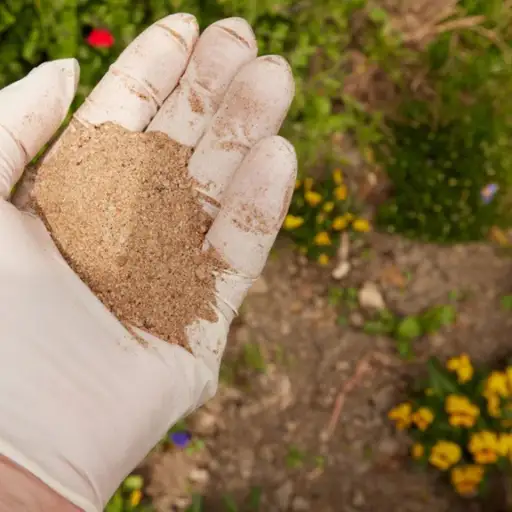
Q: What is the ideal time to apply phosphorus fertilizer?
A: It is usually recommended that phosphorus be incorporated in the fall or early spring before planting since the phosphorus applied aecomes accessible to the plant once growth starts.
Q: What effect will soil p have on phosphorus fertilizer application?
A: Soil p is one of the most determinants for phosphorus fixation. In case soil p is low, it is recommended to use phosphorus fertilizers in order to sufficient nutrient supply to the plants.
Q: Which are the different types of phosphorus fertilizers that are popular?
A: Diammonium phosphate and triple superphosphate are common forms of phosphorus fertilizers with varying rates of p availability to the plants.
Q: In what order should I apply phosphorus and potassium fertilizers?
A: While applying phosphorus and potassium fertilizers together, it is essential to adhere to basic fertilizer recommendations based on soil tests to prevent scarcities or excesses of any nutrition which may affect plant growth.
Q: Is it possible to band phosphorus fertilizer with the seed?
A: Yes, phosphorus fertilizer can be banded with the seed, potentially increasing the amount of phosphate banded and thereby increasing nutrient uptake during the early stages of plant development.
Q: What should I consider when applying phosphate banded fertilizer?
A: When applying phosphate banded fertilizer, the amount of high phosphorus fertilizer banded, soil moisture conditions, and any possibility of high salt concentration or ammonia that has a potential threat on seed germination should be factored in.






